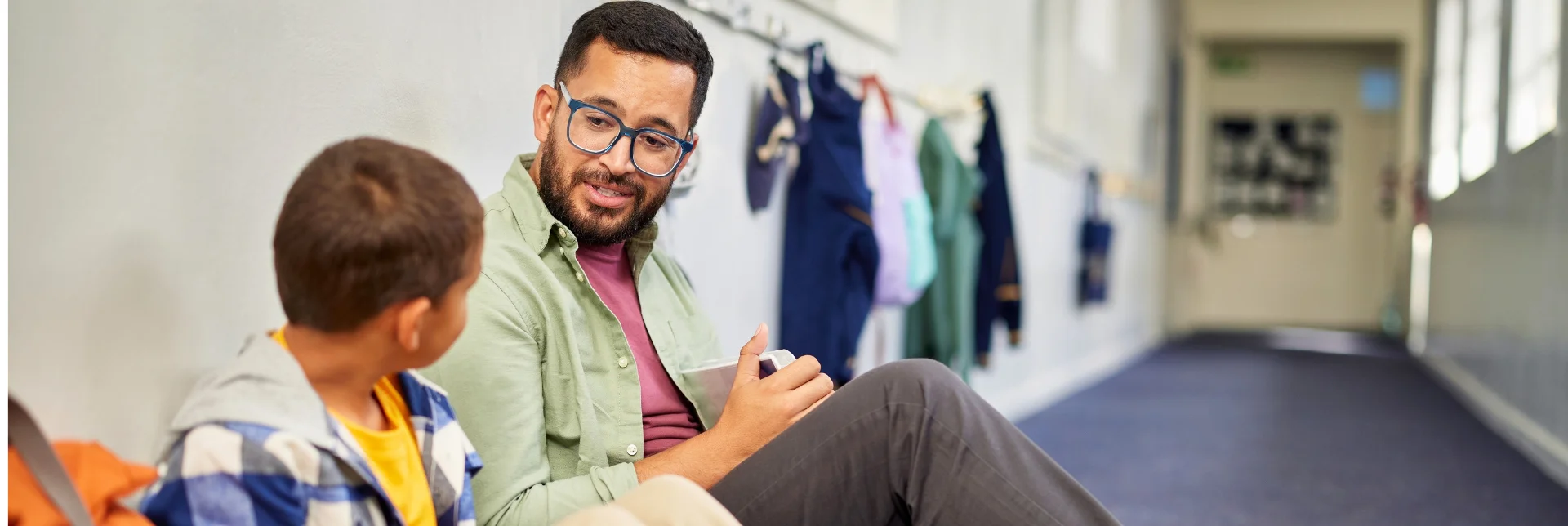
What are the facts?
| Globally | Greece |
| 3 out of 5 children report experiencing physical violence. 1 in 5 girls and 1 in 7 boys have experienced sexual abuse (WHO, 2024). | Data indicate an increase in abuse cases, while a large portion remains unreported. |
| Child abuse has serious consequences on academic performance, as well as on mental and physical health. | In Greece, the National SOS Hotline 1056 receives thousands of calls each year regarding potential cases of abuse. |
What are the forms of abuse and their signs?
| Form | Signs in the child | Signs in the parent/caregiver (possible perpetrator) |
|---|---|---|
| Physical abuse | Frequent unexplained injuries, bruises, burns, fear of being touched, phobic reactions. | Provides vague or contradictory explanations, uses harsh discipline, denies injuries. |
| Sexual abuse | Difficulty walking/sitting, knowledge of sexual matters inappropriate for age, sexualized behavior, nightmares. | Shows excessive control, avoids leaving the child alone, displays excessive protectiveness. |
| Emotional/psychological abuse | Low self-esteem, anxiety, regression, excessive insecurity, social withdrawal. | Hostile, dismissive, overly critical, or indifferent attitude toward the child. |
| Neglect | Poor hygiene, frequent hunger, inappropriate clothing for the weather, developmental delays, absences from school. | Indifference to the child’s health and education, neglect of basic needs. |
NOTE: It is important to approach signs and behaviors with sensitivity, taking into account the multifaceted nature of human behavior. While sometimes they may indicate abuse, they can also stem from a wide range of other factors that require careful consideration and understanding. For example, frequent school absences may be due to various other reasons, such as health problems or even family issues unrelated to abuse. It is crucial to maintain a balanced approach and avoid rushing to conclusions without examining all possible causes of these behaviors.
What are the risk factors?
- Perpetrator/parent/caregiver-related: mental illness, substance abuse, domestic violence, unemployment, history of abuse, social isolation.
- Child-related: disability, chronic illness, young age, premature birth, behavioral difficulties, special needs.
- Environmental: poverty, lack of social support, social isolation, natural disasters.
- (Note: These factors do not apply to sexual abuse, which can occur in any environment.)
What are the consequences of abuse?
Abuse and neglect can have lifelong consequences, including:
- Poor school performance and higher risk of dropping out.
- Greater likelihood of depression, anxiety disorders, and post-traumatic stress disorder.
- Increased risk of physical illnesses (e.g., cardiovascular, autoimmune).
- Higher likelihood of substance use and risky behaviors.
- Intergenerational cycle of violence.
When should I be concerned?
General warning signs common to most forms of abuse include:
- Frequent unexplained injuries.
- Sudden changes in behavior or school performance.
- Excessive fear of adults.
- Severe regression (e.g., bedwetting at an older age).
- Lack of interest in school or social relationships.
- Repeated unexcused absences.
- Noticeable decline in physical care and hygiene.
How to talk to a child when abuse is suspected or reported
When speaking with a child about possible abuse—or responding to a disclosure—it is essential to remain calm, avoid showing fear, and act with sensitivity and care.
What to do:
- Talk in a calm, private, and safe environment, using simple language.
- Listen carefully without interrupting; ask open-ended questions if necessary.
- Reassure the child that it is not their fault.
- Explain that their safety is a priority and that help will be sought.
What not to do:
- Do not show distrust or doubt.
- Do not ask leading or pressing questions.
- Do not use critical or accusatory language.
- Do not promise secrecy or try to handle the situation alone—explain that the information must be shared with trusted adults and services to ensure their protection.
Any suspicion or disclosure of abuse or neglect must be taken seriously. Teachers must inform the school principal immediately and follow official procedures for reporting to the Juvenile Prosecutor’s Office. Delays may put the child at greater risk.
Useful Helplines and Resources
- National Child Protection Helpline: 1107
- The Smile of the Child – SOS Hotline: 1056
- SOS Hotline for women victims of violence: 15900
- UNICEF: Resources on child protection
Where can I find more information?
To learn more about available services in the education and public health systems that support children and adolescents across the country, visit our Service Map page [here].



